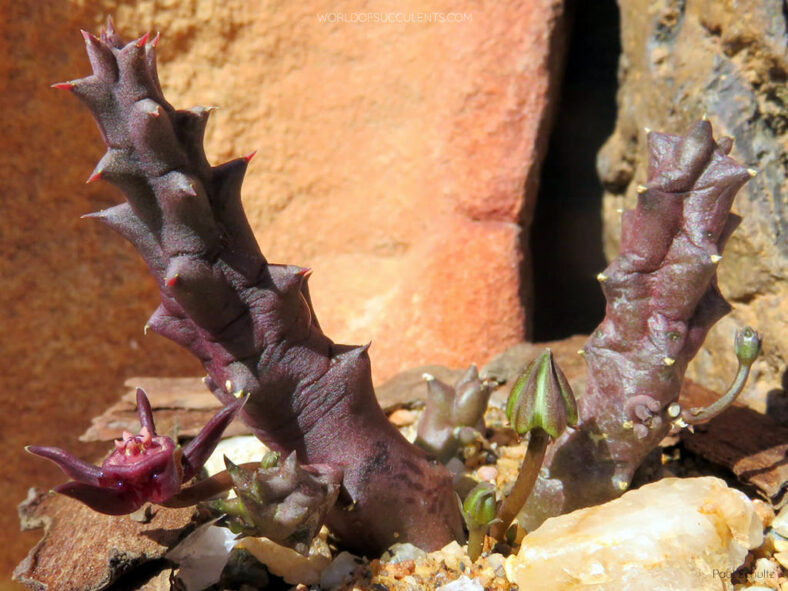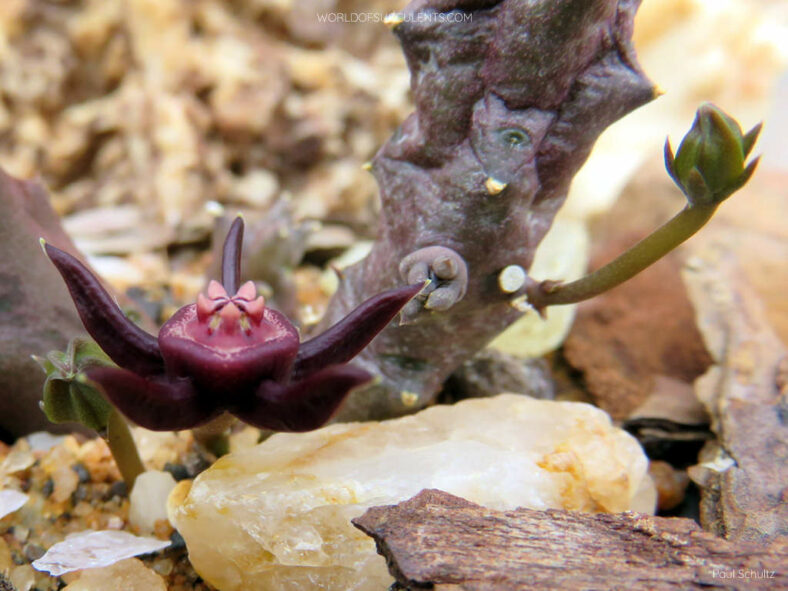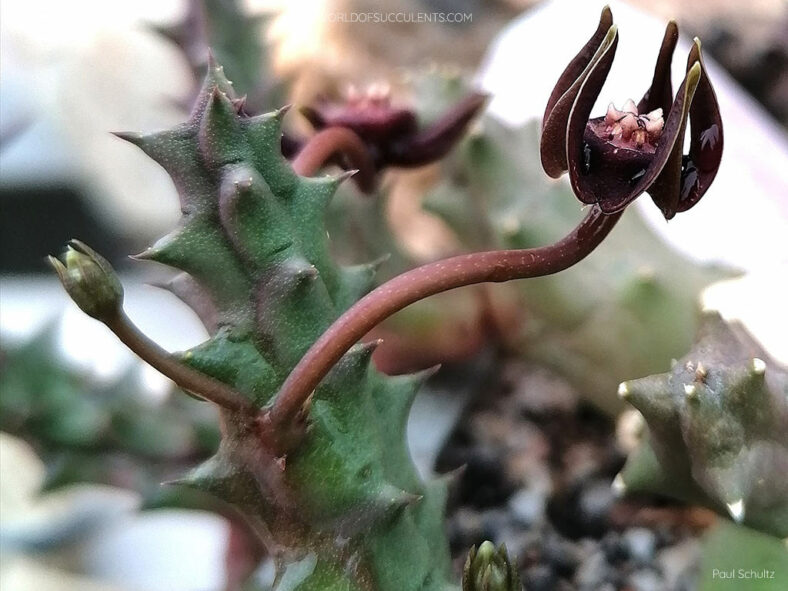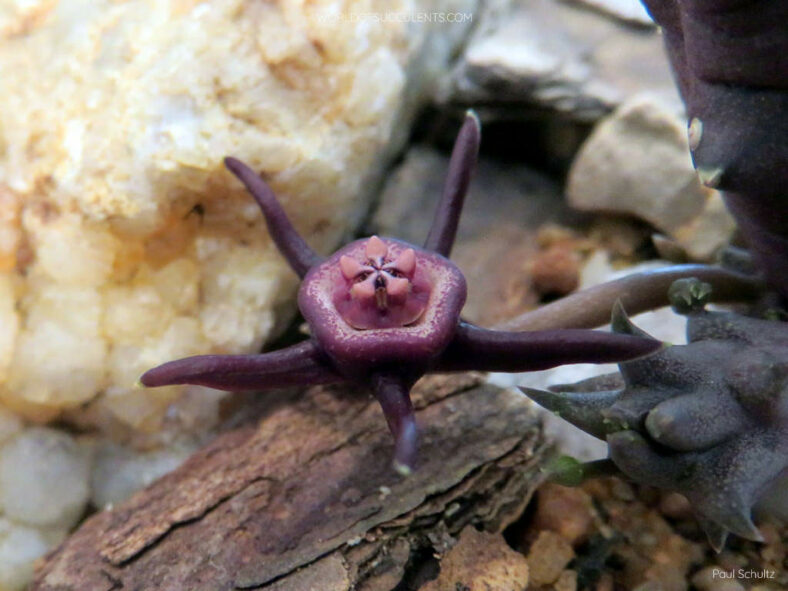Duvalia caespitosa var. compacta is a more compact variety with smaller stems and flowers than Duvalia caespitosa var. caespitosa.
Scientific Name
Duvalia caespitosa var. compacta (Haw.) Meve
Synonym(s)
Duvalia compacta, Stapelia compacta, Stisseria compacta
Scientific Classification
Family: Apocynaceae
Subfamily: Asclepiadoideae
Tribe: Ceropegieae
Subtribe: Stapeliinae
Genus: Duvalia
Etymology
The varietal epithet "compact" (pronounced "kom-PAK-tuh") means "compact" and probably refers to this variety's compact growth habit.
Origin
Duvalia caespitosa var. compacta is native to South Africa. It occurs mainly in the Western Cape and Eastern Cape, where it grows in rocky areas amongst stones and the crevices between large boulders.
Description
Duvalia caespitosa var. compacta is a small succulent that forms a compact clump of short, dull green to pinkish stems that branch at the base. The stems have conical tubercles fused near the base into four or five angles along the stem. They can grow up to 2 inches (5 cm) long and 1 inch (2.5 cm) thick. The tubercles taper gradually into a sharp leaf rudiment.
During the fall, Duvalia caespitosa var. compacta produces star-shaped flowers with five narrow corolla lobes that spread horizontally around the raised annulus. The flowers range from dark chocolate to deep purple and appear solitary or in pairs from the lower parts of the stems. The corona in the center of the flower is orange-brown to yellow on a reddish-brown to yellowish-green base. The fruits are paired follicles that resemble horns and can reach a length of 6.8 inches (17 cm). They appear up to a year after flowering.

How to Grow and Care for Duvalia caespitosa var. compacta
Light: Duvalia caespitosa var. compacta prefers full sun but will benefit from light shade during the hottest summer days. Indoors, place the plant near the brightest window of your home because it will stretch if it does not receive enough sunlight. Avoid abruptly moving a plant adapted to lower light levels to full sun to prevent sunburn.
Soil: Use commercial potting soil mix for succulents or prepare your own with 50 to 70 % mineral grit, such as coarse sand, pumice, or perlite.
Temperature: The plant thrives in warm outdoor environments with low to moderate humidity. It does not like winter cold and should remain fairly dry and warm during its dormancy. Duvalia caespitosa var. compacta grows best in USDA Plant Hardiness Zones 11a to 11b, with average minimum winter temperatures ranging from 40 to 50 °F (4.4 to 10 °C).
Watering: It has typical watering needs for a succulent. During the growing season, from spring to fall, water the plant thoroughly and allow the soil to dry between waterings. When it goes dormant in winter, it needs almost no water, about once a month.
Fertilizing: Fertilizing is a good idea to keep the plant healthy and thriving. Feed it with water-soluble fertilizer diluted to half the recommended strength, but only when the plant is actively growing.
Repotting: Repot Duvalia caespitosa var. compacta in spring, just before the growing season. It has shallow roots and does not require too much soil to grow. Always pick a container with drainage holes.
Propagation: The best way to propagate this succulent is by stem cuttings. To ensure good rooting, take cuttings during the growing season. The plant is also easy to start from seeds in spring.
Learn more at How to Grow and Care for Stapeliads.
Toxicity of Duvalia caespitosa var. compacta
Duvalia caespitosa var. compacta has no toxic effects reported, so it is safe for growing around kids and pets.
Links
- Back to genus Duvalia
- Succupedia: Browse succulents by Scientific Name, Common Name, Genus, Family, USDA Hardiness Zone, Origin, or cacti by Genus
Photo Gallery
Click on a photo to see a larger version.


